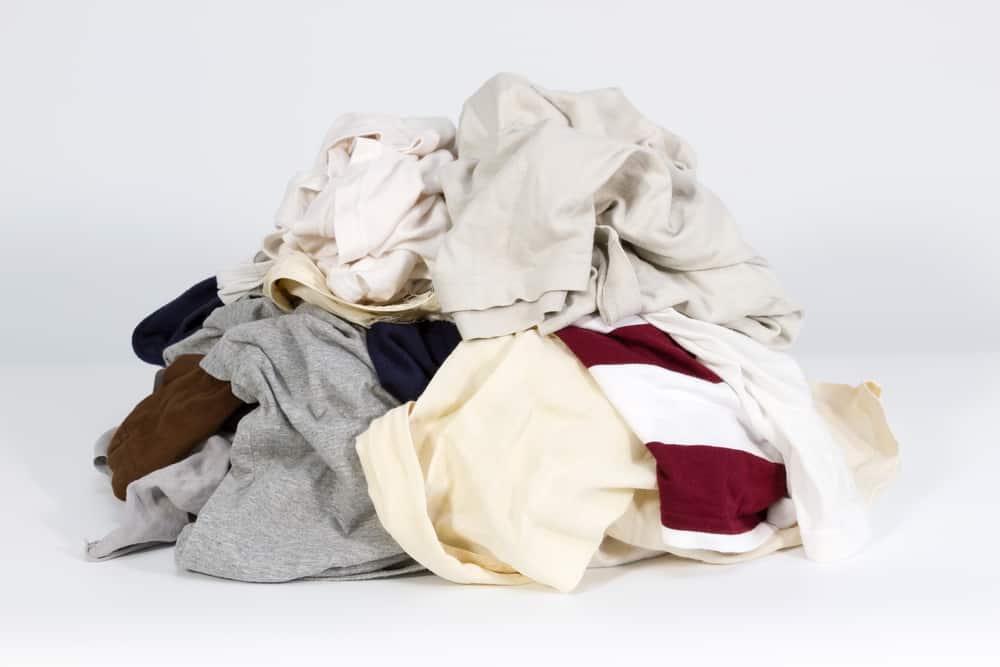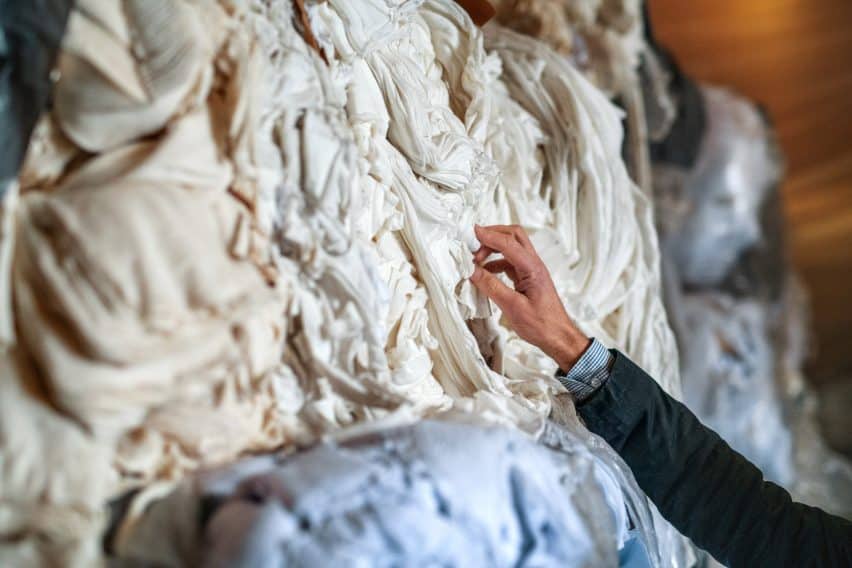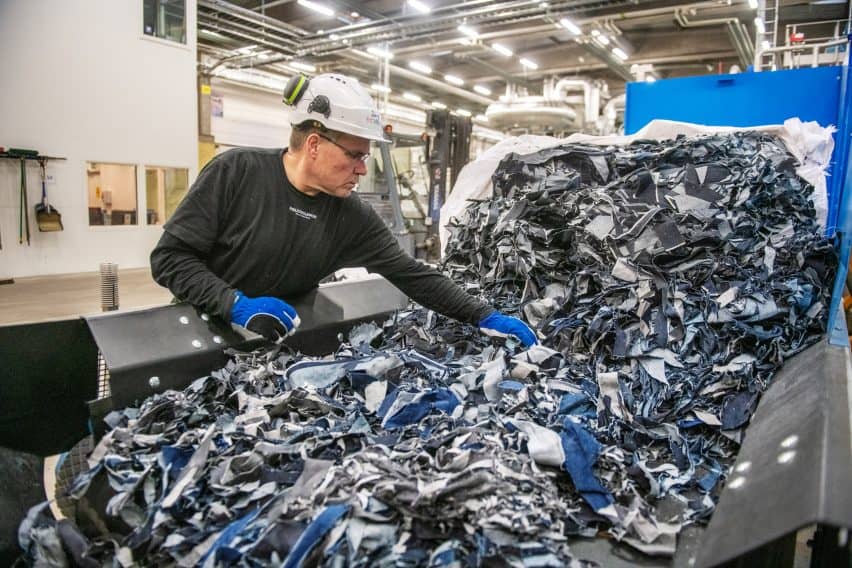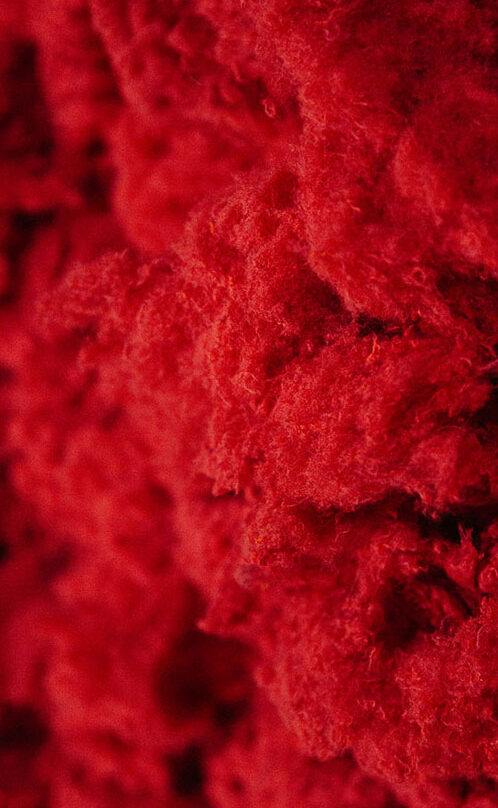How is a recycled cotton fabric made?
Discover how recycled cotton is made, and all of its pros and cons
Cotton is the second most important fiber in terms of volume, one of the most common materials in fashion, around half of our garments contain it.
The problem is that most of these garments are not recycled at the end of their lives, leading to a massive wastage and a huge stress on the environment.

According to The World Counts, 27 million tons of cotton are produced globally in a year, by using 2.5% of all cultivated land worldwide and accounting for 16% of all insecticides, 7% of all herbicides, 4% of all nitrogen and phosphorous fertilizers worldwide, which deeply harm the environment and the people who grow it. These were the upstream problems, the thing is most cotton garments are still not recycled, so this is where recycled cotton comes into play. Let’s see how recycled cotton is made and all of its pros and cons.
What is recycled cotton made of?

Recycled cotton, also called regenerated cotton or reclaimed cotton, is made starting from pre-consumer industrial waste and post-consumer garments or accessories. The largest amount of recycled cotton is coming from pre-consumer waste (easier to collect and classify in terms of color and mixing ratios), such as waste generated during the processing of virgin raw materials, semi-finished products along the supply chain and cutting scraps (consider that during the production of traditional textile products, the average waste of cotton is 45%). What originates from post-consumption, such as garments, upholstery, towels, used household items, is much more difficult to classify and reprocess due to the variety of colors involved, the mix of fibers that make up the fabric, the rest of the raw materials and accessories present in the garments and it is a process that involves a much more organized sorting, more work and a higher labour and processing cost.
HOW IS RECYCLED COTTON MADE?
Nr. 1
GATHERING
The first step in cotton recycling is the collection of cotton waste and garments from all over the world.
Nr. 2
SORTING
During this key phase, pre-consumer scraps and post-consumer garments and accessories are divided per shade of color and composition. Various bales of different shades and composition are created accordingly. This sorting process allows to avoid re-dyeing materials.
Nr. 3
CLEANING
Sorters remove foreign components, like buttons, zippers and all that is not recyclable
Nr. 4
SHREDDING OR "CHIPPING"
Pre-consumer scraps and post-consumer materials are run through a machine that mechanically takes them back to fibers, which are inevitably weaker than virgin ones.
Nr. 5
BLENDING
Since the quality of the recycled cotton fiber will not be the same as original virgin cotton, it is usually blended with other fibers as a blend, such as virgin cotton, polyester or other fibers - depending on what the brands want to achieve.
Nr. 6
SPINNING
The "new" recycled cotton fiber blend is then spun back into yarns to be reused in other products.
Nr. 7
FROM THE NEW YARNS ON, THE PROCESS VARIES ACCORDING TO THE KIND OF PRODUCT THAT IS MADE
It the brand is making recycled cotton knits, these yarns will be manufactured directly. If the brand is making a recycled cotton fabric, then these yarns will be twisted, warped, woven and finished to create a new circular textile.

PROS OF RECYCLED COTTON
Nr. 1
IT CAN FOSTER CIRCULAR ECONOMY IN FASHION
Recycled cotton gives new life to many products and saves them from landfills, thus helping the fashion industry to be less wasteful. It definitely extends the lifespan of already existing fibers and reduces the environmental impact of textile production.
Nr. 2
IT IS MADE MECHANICALLY
Recycled cotton - like recycled animal fibers - is obtained through a mechanical recycling process, where rags and garments (after being sorted per color) become 'new' cotton fibers, without using chemicals and natural resources.
Nr. 3
IT AVOIDS DYEING (MOST OF THE TIMES)
Textile dyeing is the second largest water polluter in the world, but - as it happens with recycled wool - if we use recycled cotton fibers, it is not necessary to dye it because the final color will correspond to the color of the original fibers. All of this will lead to a great reduction of CO2 emissions and water pollution resulting from dyeing processes.
Nr. 4
IT SAVES LARGE AMOUNTS OF WATER
Using recycled cotton significantly reduces the amount of water used during the clothing production and in the cultivation process. As explained above, cotton is a crop that requires a lot of water and there are already real facts about its impact, such as the disappearance of the Aral Sea in Central Asia, for example.
Nr. 5
IT AVOIDS THE USE OF DANGEROUS CHEMICALS
Choosing recycled cotton instead of virgin cotton will drastically reduce the need of using fertilizers, pesticides and insecticides. This is really important as it is estimated that 8-10% of the world consumption of pesticides is related to cotton cultivation.
Nr. 6
*IF THE FIBER IS TOO SHORT, IT CAN STILL BE DOWNCYCLED
Sometimes, recycled cotton fibers are too short to be spun again and turned into yarns and then fabrics. However, whenever garment-to-garment recycling is not possible, recycled cotton can find new life in many different low-grade products such as insulation, mop heads and stuffing.

CONS OF RECYCLED COTTON
Nr. 1
THE FIBER IS SHORTER AND WEAKER THAN VIRGIN COTTON
As with other recycled fibers, the strenght, lenght and quality of the fiber can be really challenging, due to the recycling process that literally 'chips' garments, yarns and other materials. So the final performance of the new garment will inevitably be lower.
Nr. 2
IT NEEDS TO BE BLENDED
Although some fabric manufacturers use recycled cotton alone, recycled cotton is often blended with other types of fibers to increase its strength and longevity, such as virgin cotton or polyester. Currently, the amount of recycled cotton in fabrics varies from 20% to 90%, depending on the application, as reported by the Ellen MacArthur Foundation.
Nr. 3
THE FINAL COMPOSITION NEEDS TOLERANCE
The risk of contamination by other fibers is much higher for recycled cotton than other recycled fibers. Stitching and sewing threads of different materials as well as small amounts of spandex are likely to be present in the final composition, especially if the garments it comes from were not designed to be recycled following Eco-Design rules.
Nr. 4
WHATEVER IS PRODUCED WITH IT, IT WILL NOT BE RECYCLABLE AGAIN
A recycled cotton garment cannot be recycled again, as the fibers are already weakened a lot during the first recycling process.

Can recycled cotton be a key material for a sustainable circular economy in fashion?
Well, our answer is “yes”. In the past few years, recycled cotton has gained immense popularity, just as recycled wool, especially because cotton is one of the most used fibers worldwide and billions of cotton garments are produced every year – and most of them are not recycled at the end of their life cycle. Thanks to recycled cotton, the industry could actually prevent tons of textile waste, accessories and garments from going to landfill or incineration, but also to reduce the need of producing too much virgin cotton, thus also fighting water scarcity and land pollution with dangerous chemicals. The fashion industry should definitely take action to foster the use of recycled cotton and improve recycling processes in order to make it more and more available and of a higher quality. And also because, according to the HIGG Index, recycled cotton is a more sustainable alternative to both conventional and organic cotton.
We, as a strong supporter of circular economy, are already using a lot of recycled cotton in our collection, make sure to take a look at Roy, Charka, Wild, J-Corecy and J-Calu textiles.
About Manteco, Italian premium textiles and circularity since 1943
After decades in the fashion world, in 2018, we have created the Manteco Academy project, through which we give webinars, in-person lessons and workshops on eco-design, circular economy and sustainability to numerous fashion schools, technical universities and brands worldwide. Thanks to this educative commitment and our heritage, we are often invited as guest speaker at events, panels, podcasts and conferences about sustainable fashion and circular economy.

